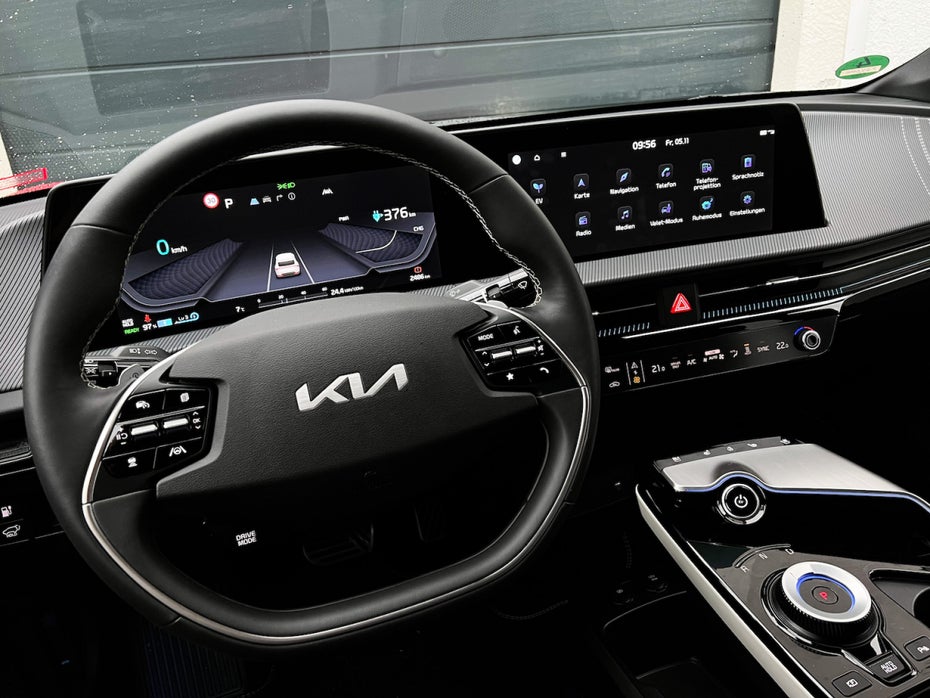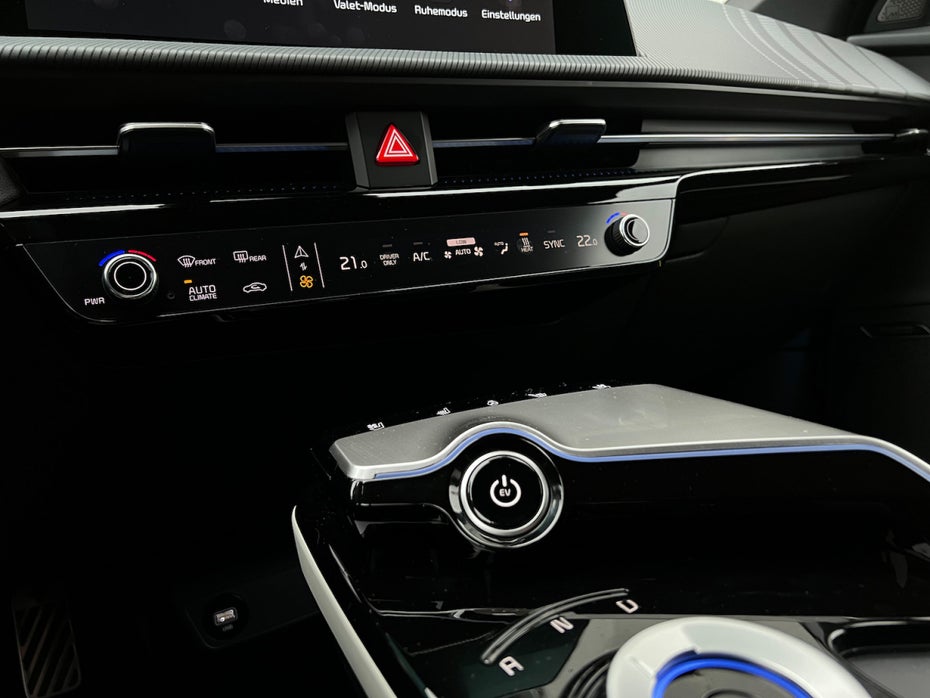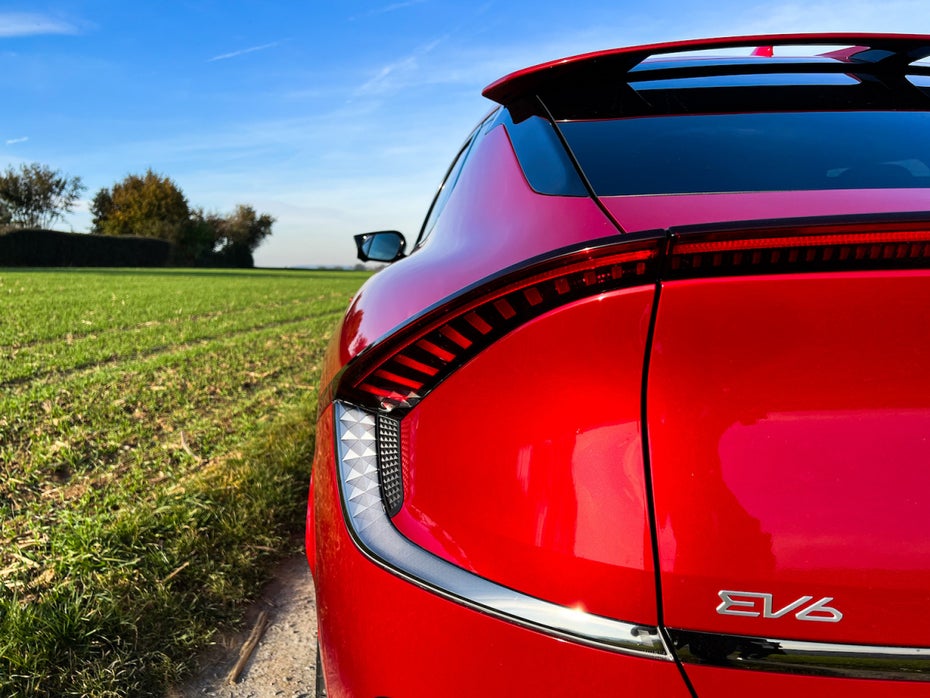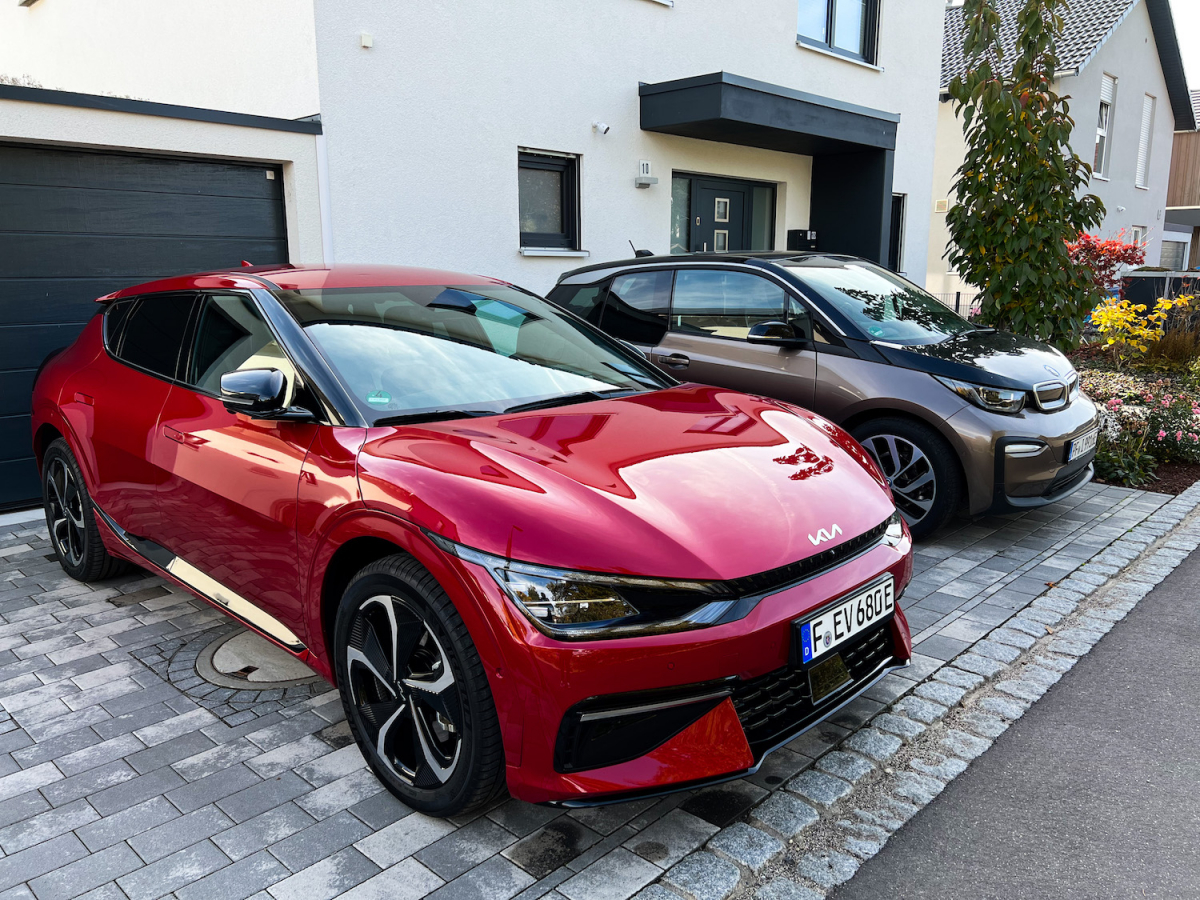Powerful charging miracle with plenty of space
We only tested the Kia E-Niro a few weeks ago. Although this shone with excellent consumption values and extensive equipment, you noticed the compact crossover quite quickly that it was getting a bit old. On the one hand in the design of the cockpit, on the other hand in the charging power: The E-Niro reaches a maximum of 70 kilowatts at the fast charging station, which results in a charging time of almost 50 minutes if you want to charge from 10 to 80 percent SoC (State of Charge).
What you have to keep in mind with all this: The E-Niro was originally not designed as a fully electric vehicle, but as a hybrid. And that already in 2016: The fact that Kia has made enormous progress in the field of electromobility since then is shown by the new EV6, which is not only a real eye-catcher, but also outshines many current models of the competition in terms of (charging) performance .
Contents
- 1 Kia EV6: 3 model variants from the family car to the super sports car
- 2 Kia EV6: 240 kilowatt charging capacity – from 10 to 80 percent in 18 minutes
- 3 Kia EV6: A range of around 400 kilometers with a 77.4 kilowatt-hour battery
- 4 Kia EV6: futuristic look, state-of-the-art technology
- 5 Kia EV6: Ready for the fully electric future
Kia EV6: 3 model variants from the family car to the super sports car
With the EV6, Kia decided to cover the widest possible range of possible target groups.
In the basic version, the crossover comes with a 58 kilowatt hour battery, 394 kilometers range (WLTP) and rear-wheel drive. With an output of 125 kilowatts / 170 hp, it goes from 0 to 100 kilometers per hour in a leisurely 8.5 seconds (top speed: 185 kilometers per hour). If you need a longer range (528 kilometers in the WLTP cycle), you can use the 77.4 kilowatt-hour battery. The EV6 then completes the sprint from 0 to 100 kilometers per hour in 7.3 seconds thanks to a little more power (168 kilowatts / 229 hp).
These are ideal conditions for anyone looking for a more modern electric car that can tow up to 1,600 kilograms – and is also extremely spacious.
However, Kia is not satisfied with that. Those who like to be a little sportier can swap range for performance with the EV6. With the GT-Line (506 kilometers in the WLTP cycle) the output increases to 239 kilowatts / 325 PS. The all-wheel drive accelerates the crossover from 0 to 100 kilometers per hour in 5.2 seconds.
And then there is the top model: the EV6 GT. With an incredible 430 kilowatts / 585 hp, it goes from 0 to 100 kilometers per hour in 3.5 seconds. The top speed is 260 kilometers per hour. The basic equipment of this model includes an electronic limited-slip differential. For comparison: a Porsche Taycan 4S masters the sprint in four seconds, a Porsche 911 GT3 takes 3.4 seconds.
The Kia EV6 stands out visually from the crowd. (Photo: Frank Feil)
Let’s come to the charging power. While Kia has delivered a negative example with its 70 kilowatts with the E-Niro, the South Koreans go to great lengths with the EV6: Thanks to the 800-volt charging system, the EV6 with a small battery achieves an impressive 180 kilowatts, with the 77.4 kilowatt-hour Model even 240 kilowatts. This means that under optimal conditions, a range of 100 kilometers can be recharged in 4.5 minutes. A charging process from 10 to 80 percent SoC takes 18 minutes.
With the exception of the Porsche Taycan, Audi E-tron GT, Hyundai Ioniq 5 and the Tesla Model 3, these values put almost all current electric cars in the shade.
At least in theory. But how does it look in practice? In fact, the charging curve on the EV6 quickly skyrockets to around 230 kilowatts. This value is held up to around 50 percent SoC. Then it goes downhill abruptly. However, the charging power up to 80 percent SoC is still between 150 and 175 kilowatts.
In this context, you have to keep in mind that the VW ID 4 or Skoda Enyaq, for example, can manage a maximum (!) 125 kilowatts – and only up to around 40 percent SoC. Even the Mercedes-Benz EQS, which is almost three times as expensive, charges significantly more slowly than the Kia EV6.


The cockpit of the Kia EV6 is futuristic, but not as minimalistic as in parts of the competition. (Photo: Fran Feil)
For those who drive a lot on the autobahn with their electric car, the charging capacity of the Kia EV6 is a real blessing. Because, as has already been written elsewhere: In the end, it is not the range that is decisive for an electric car, but the charging power.
Of the more than 500 kilometers range in the WLTP cycle, around 400 kilometers remain with the electric crossover in everyday life. Depending on the driving style, sometimes 20 kilometers more, sometimes 20 kilometers less. Consumption fluctuates somewhere between 19 and 22 kilowatt hours per 100 kilometers. Given the size of the vehicle and the battery, the values are okay. The EV6 is not a consumption miracle, but neither is it a power hog.
Let’s take a look at what all of this means on the long haul. The distance from Stuttgart to Berlin is 640 kilometers. In order to cover this distance with the EV6, you have to plan either a longer charging break (12 to 18 minutes) or two shorter ones (6 to 9 minutes) depending on your driving style and outside temperature. During this time, at many rest stops, you can’t even go to the toilet and buy a coffee. The argument that electric cars are not suitable for longer journeys has thus finally been refuted.
By the way: recuperation can be easily adjusted in several stages using the paddles on the steering wheel, so that one-pedal driving is also possible.
With the EV6, Kia attached particular importance to the subject of design. The futuristic, but at the same time sporty design attracts people’s attention – and makes the vehicle stand out from the crowd. In particular, the rear end, which is discussed controversially, makes a significant contribution to ensuring that the EV6 is noticed on the road.
The interior is reminiscent of a spaceship due to the generous display and the dominant center armrest with start-stop button. This impression is supported by visual animations and matching sounds when getting into the vehicle. Like other manufacturers, Kia relies on sustainable materials: the door compartments and the floor carpet in the EV6 are made of recycled plastic, the seats are optionally available with covers made of recycled vegan leather. There is nothing to complain about when it comes to the workmanship of the interior.
On request, the Kia EV6 comes with all kinds of assistance systems, AR head-up display, Meridian Premium sound system and numerous security systems. With a view to electromobility, however, two things are particularly worth mentioning: On the one hand, the crossover has reclining seats so that you can easily close your eyes for a few minutes during longer breaks.
On the other hand, the EV6 can provide up to 3.6 kilowatts via vehicle-to-load (V2L). This can be used, for example, to charge the e-bike before the upcoming bike tour or to operate the electric grill on the campsite. In theory, even other electric cars can be charged, but in practice this will probably only play a role in emergency situations.

The Kia EV6 can convince as an electric car. (Photo: Frank Feil)
All in all, with the EV6, Kia delivers an excellent electric car. Yes, the software in the vehicle may not be on par with that of Tesla, but apart from that, the EV6 leaves nothing to be desired.
Particularly noteworthy is the charging capacity of up to 240 kilowatts, which is usually only found in vehicles over 80,000 euros. The EV6, on the other hand, starts at around 36,000 euros after the subsidy has been deducted. If you opt for the large battery, all-wheel drive and let off steam with the special equipment, between 45,000 and 50,000 euros are due. Considering what is on offer, a more than fair price.
At the same time, Kia is making its own premium claim clear with the EV6. Because compared to older models, the EV6 is actually no longer a “cheap” car. But it doesn’t have to, because the EV6 definitely sets new standards for the brand in terms of ride comfort and dynamics.



